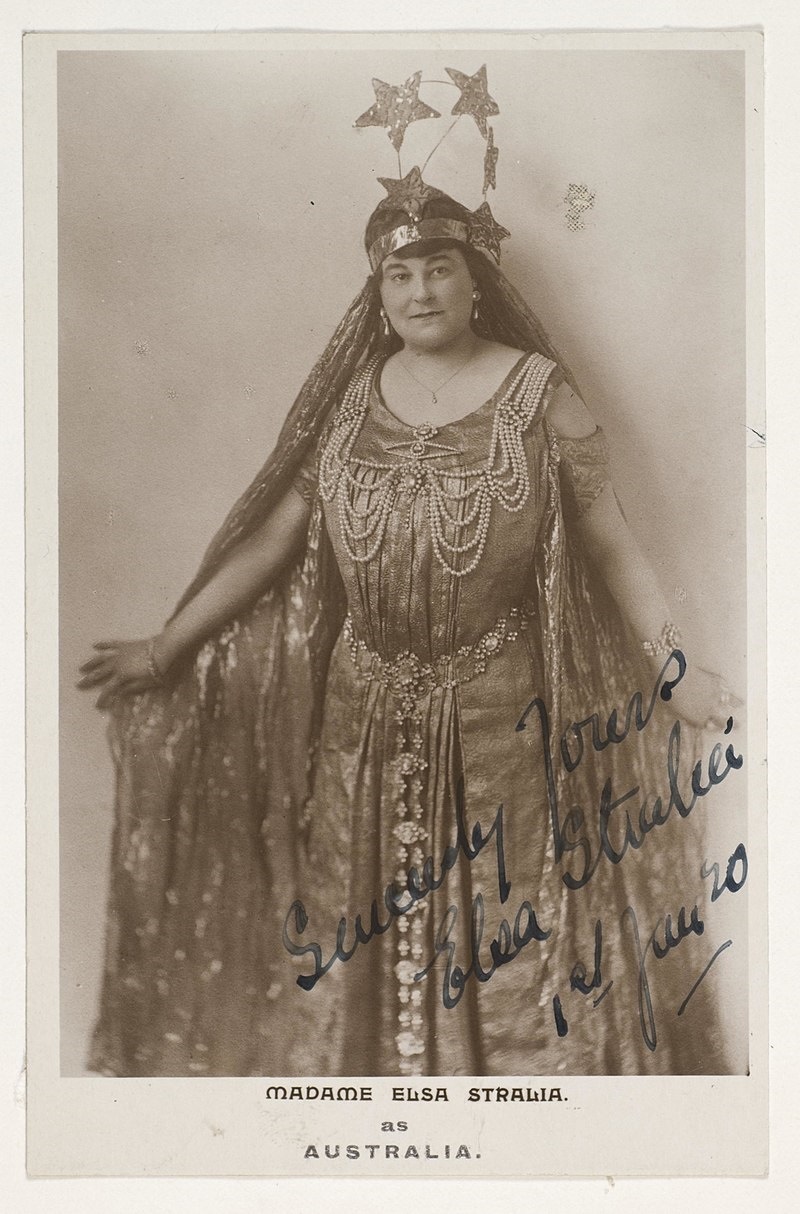
Soprano songbird wows Cessnock audiences
In 1881 Elsie Mary Fischer was born in Adelaide, an ordinary girl who transformed herself into an international musical superstar, performing at the highest level in London, New York and South Africa. She was an operatic soprano with an astounding and powerful voice, who adopted ‘Elsa Stralia’ as her stage name.
She left Australia in 1910 for an overseas career, debuting at the Royal Opera Company in London three years later. In 1922 she went to the USA and took that country by storm. Her career soared there with patriotic audiences loving her performances where, dressed as the Statue of Liberty, she sang ‘The Star-Spangled Banner’.
In her professional life Elsa Stralia looked every inch the superstar. She was known for her extravagant costumes, elaborate head-dresses and tiaras, with a lavish lifestyle which included living in high-class hotels and commanding private suites on ocean liners. She was often described as ‘Madame Stralia’.
Three years later, in February 1925, Elsa Stralia announced that she was returning to Australia on tour and that she was to perform not just in the capital cities, but in regional and rural towns as well.
In July 1925 Elsa hit the Hunter with acclaimed performances in Newcastle. On 15 October it was Cessnock’s turn and the soprano songbird arrived in town to enormous excitement. Local newspaper, the Cessnock Eagle, enthused about her ‘dramatic soprano’ voice, with the Strand Theatre full of enthusiastic music lovers who demanded a number of encores.
Elsa’s fans were legion, her fame enormous and the media enthused over her musical artistry. It seemed from the outside that she had it all, but behind the scenes her life had been tumultuous. Her mother had died when Elsa was a teenager and her widowed father, unable to cope, took his own life three years later. As the eldest child and the only girl in the family she was left to support her five younger brothers.
Elsa married William Moses in 1908, an emotionally cruel man who caused her much distress; they eventually divorced in 1935. Elsa re-married the same year to Adolph Christensen and this relationship lasted for the rest of their lives.
Elsa died in Melbourne in 1945. She left her estate, valued today at almost $300,000, to establish a scholarship for young female Australasian singers. A lasting musical legacy for an Adelaide girl who had a life of global fame, personal tragedy an artistic brilliance.